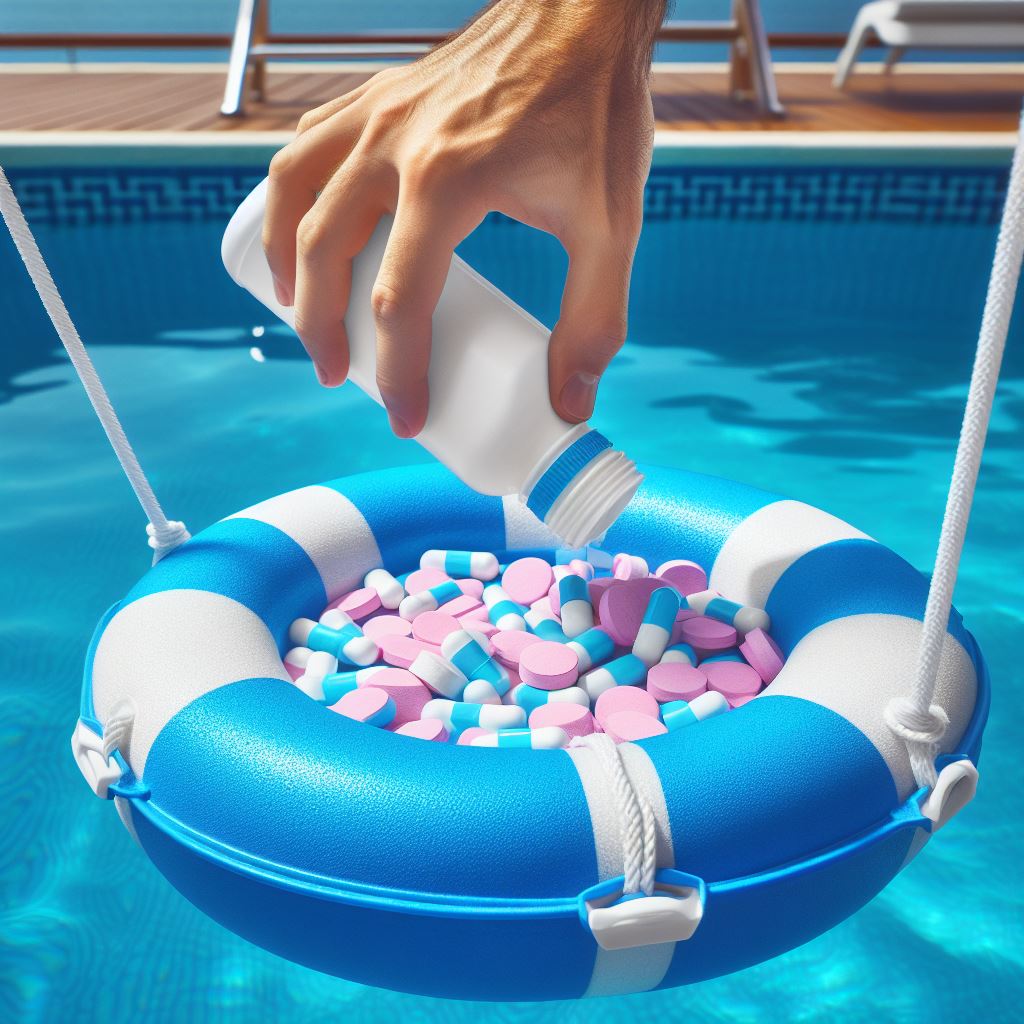In the routine maintenance of swimming pools, maintaining the proper chlorine levels and pH is extremely important. Chlorine tablets are commonly used disinfectants, whose effectiveness is influenced by several factors, particularly the pH level of the pool water. The pH not only affects the basic properties of the water but also directly influences the disinfecting power of chlorine. This article will explore the disinfecting effects of chlorine tablets at different pH levels and provide some recommendations for adjustments to maintain ideal water quality.

The Principle of Chlorine Disinfection and the Impact of pH
Chlorine disinfects by destroying the cellular structure of microbes, a process chemically known as oxidation. In swimming pools, chlorine is typically added in the form of tablets that slowly dissolve in the water, releasing effective disinfectants. However, the disinfecting effectiveness of chlorine greatly depends on the pH of the water.
Ideal pH Value: The ideal pH range for pool water is 7.2 to 7.8. Within this range, the effectiveness of chlorine as a disinfectant is optimal.
High pH Value: When the pH exceeds 7.8, the form of chlorine is mainly hypochlorites, which are less effective as disinfectants. A high pH reduces the proportion of free chlorine (hypochlorous acid), decreasing its germicidal efficiency.
Low pH Value: When the pH is below 7.2, although the disinfecting effect is enhanced, an overly acidic pH can cause the water to be too harsh, which may damage pool equipment and irritate swimmers’ skin and eyes.
Specific Effects of pH on Chlorine Disinfection
The disinfecting effects of chlorine vary significantly under different pH levels:
pH 7.2-7.8
Within this range, the concentration of the most effective form of chlorine—hypochlorous acid—is highest. This form of chlorine can quickly and effectively kill bacteria and viruses.
pH above 7.8
As the pH increases, effective hypochlorous acid converts into hypochlorites, significantly reducing disinfecting power. A high pH may require an increased dosage of chlorine to compensate for the reduced efficiency.
pH below 7.2
At lower pH levels, although the disinfecting power of chlorine is enhanced, such conditions may corrode pool facilities and cause discomfort to swimmers.
Strategies for Maintaining Ideal pH
To ensure the best disinfecting results from chlorine tablets, pool maintenance staff should regularly test and adjust the pH of the pool:
Using pH Test Kits: Regularly use pH test kits to measure the acidity or alkalinity of the water, and adjust as needed.
Adjusting pH: If the pH is too high, pH reducers (such as sulfuric acid or hydrochloric acid) can be added. If the pH is too low, alkaline substances like sodium carbonate (commonly known as soda ash) can be used to raise the pH.
Continuous Monitoring: Especially during periods of high usage, such as the hot summer months or in public pools, more frequent monitoring and adjustments are necessary.
Conclusion
Understanding and controlling the pH of pool water is crucial for ensuring the efficiency of chlorine tablets as disinfectants. By continuously monitoring and appropriately adjusting the pH of the pool, the disinfecting effects of chlorine can be maximized, ensuring the safety and cleanliness of the pool water. This not only helps maintain the long-term health of the pool but also protects the health and comfort of its users.

 Instant
Quote
Instant
Quote Email
Us
Email
Us